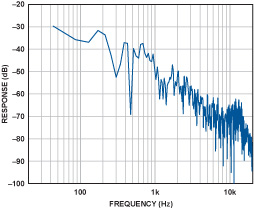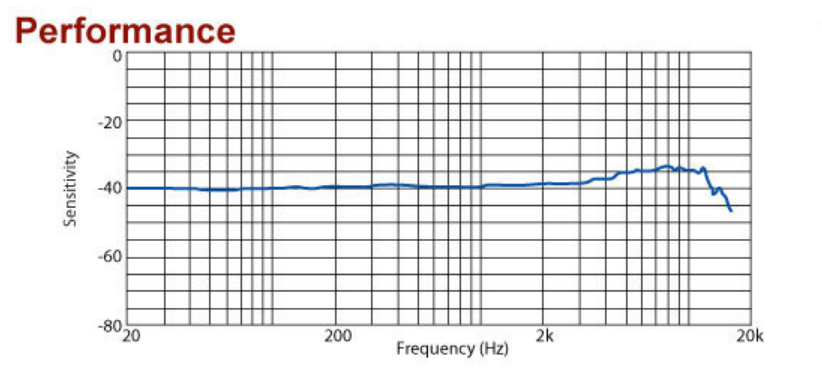Piezo is it! Piezo is it! Piezo is it!
If asking people who believe this, the resulting answer always is a swell of the marketing hype that manufacturers of piezo pickups unleash to their audience - regardless of what harm they do to the instrument.
Well, let's step through the facts ...
When were piezo elements invented? ...
"French physicists Jacques and Pierre Curie discovered piezoelectricity in 1880. The piezoelectric effect results from the linear electromechanical interaction between the mechanical and electrical states in crystalline materials with no inversion symmetry."
(Wikipedia, https://en.wikipedia.org/wiki/Piezoelectricity)
In audio technology, piezo pickup systems were used in record players in times post World War II up to the late 1960ies, since audio industries were not able to produce coils that were small enough to build electro-magnetic pickup systems. But with the invention of electro-magnetic pickups, the piezo technology vanished quickly from the market, since these were known for their harsh and screechy sound ...
Of what is a piezo pickup essentially made? ...
The easy answer is: 'sand'. This 'sand' is bound by an electrically conductible ceramic substrate, that keeps the crystals closely together which is essential that a piezo element can work at all.
The actual piezo element is in turn bound to a metal plate or bar with a weight of several grams.
- Barium titanate.
- Lead titanate.
- Lead zirconate titanate (PZT)
- Lithium niobate.
- Lithium tantalite.
- Potassium niobate.
- Sodium tungstate.
What does a piezo element actually do?
A piezo element converts mechanical vibrations into electrical signals through the piezoelectric effect. When the material is deformed, it generates an electric charge, which can be used to capture the vibrations of an instrument and convert them into an electric signal.
Piezo elements function as 'bending wave sensors', which require a firm attachment to the vibrating surface (through gluing or clamping). This firm attachment is crucial for the piezo element to detect vibrations accurately. However, this attachment can significantly alter the vibration characteristics of the surface, potentially degrading its acoustic properties. This is particularly problematic for delicate instruments, where natural resonance is essential for sound quality.
Frequency range and linearity of piezo elements ...
| Piezo pickup | Modern electret condenser microphone |
 |
 |
Comparing the linearity of piezo pickup in contrast to a modern high-grade electret condenser microphone cartridge (as used with AniMic/i or AnyMic cable microphones) over the audible frequency range of 20Hz ... 20kHz piezo pickups show their overall deficiency.
One cannot speak of linearity at all in piezo pickups. The response rate constantly degrades towards increasing frequencies and the response value is erratic and changes tremendously with every frequency step.
This is not only to the detriment of overtones (in the areas of higher frequencies) but the harsh sound characteristic of piezo pickups that are often criticized comes from this erratic response behavior of piezo pickup elements.
Types of piezo pickups ...
- Disks/plates (for mounting to vibration areas)
- Bars or tubes (for 'under saddle' mount)
- soft (tubes)
- hard (bars)
What do all these types have in common?
All types of piezo pickups, regardless of their specific form (disks, plates, bars, or tubes), share a common working principle that significantly impacts the natural sound of the instrument. Piezo elements are bending wave sensors (structure-borne), which means they detect mechanical vibrations through the deformation of the material. This deformation generates microscopic electrical charges within the crystalline particles embedded in a conductive substrate, which can be described as "microscopic lightning.". This explains the harsh sound, that piezos generate.
However, this process has several negative implications for the natural sound of the instrument:
- Alteration of Vibrations: To function effectively, piezo elements must be firmly attached to the vibrating surface (e.g., glued or clamped). This firm attachment alters the natural vibration characteristics of the surface, which can degrade the instrument's acoustic properties.
- Non-Acoustic Nature: The electrical signals generated by piezo elements are a result of mechanical deformation, not sound waves. This means that piezo pickups do not "hear" sound in the traditional sense. Instead, they respond to physical vibrations, which can lead to a sound that is often described as harsh or quacky, especially in delicate instruments like nylon-stringed guitars.
- Impact on Resonance: The firm attachment required for piezo elements can dampen the natural resonance of the instrument, leading to a loss of the rich, full sound that is characteristic of high-quality acoustic instruments.
In summary, while piezo pickups are effective at capturing mechanical vibrations, their method of operation can significantly alter and often degrade the natural acoustic properties of the instrument. This is a crucial consideration for musicians and audio engineers when choosing a pickup system.
Conclusion
Indeed, a piezo element, often termed a 'contact microphone,' doesn't perceive sound in the way our ears do. Instead, it's a transducer that converts mechanical vibrations (like in an instrument) into electrical signals. The term 'contact microphone' is more about its application, emphasizing that it's placed in direct contact with the source of sound vibrations, rather than implying it 'hears' in the way our ears do. It's essential to clarify such terminology to avoid misunderstandings and provide a more accurate understanding of the technology.
The necessity of a firm attachment for piezo elements to function effectively is a double-edged sword. While it allows the piezo element to capture vibrations, it also manipulates the vibrating surface, often to its detriment. This manipulation can lead to a loss of the instrument's natural resonance and a degradation of sound quality, which is a major drawback of using piezo pickups.
Piezo pickups are soundboard killers in any shape and color they are coming along. In particular with nylon-stringed instruments they sound quacky and twangy.

